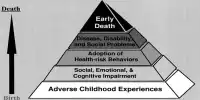According to researchers, a small act of kindness can go a long way toward improving student health and wellness. A new study looks at how incorporating a kindness assignment into an undergraduate course affected students’ perceptions of themselves, their peers, and their campus.
According to UBC Okanagan researchers, a small act of kindness can go a long way toward improving student health and wellness. Dr. John-Tyler Binfet, associate professor in the School of Education, and Dr. Sally Stewart, associate professor of teaching in the School of Health and Exercise Sciences, recently published a study that investigated how the inclusion of a kindness assignment in an undergraduate course influenced student perceptions of themselves, their peers, and their campus.
While several studies have examined the effects of kindness on wellbeing, there has been little research into how university-aged students understand and practice kindness, according to Dr. Binfet. Thousands of university students returned to class across Canada in September, and Dr. Binfet observes that in the midst of COVID-19, every act of kindness counts.
This research investigated how the inclusion of a kindness assignment in an undergraduate course influenced student perceptions of themselves, their peers, and their campus. It can help students understand that there is evidence behind how and why people are kind, and that kindness does have an impact on health and wellbeing.
Dr. John-Tyler Binfet
As a researcher at the University of British Columbia, I spend a significant amount of time in schools investigating how students and teachers perceive kindness. This entails asking students and teachers to define kindness and recall examples of both kindness they have shown and kindness they have received at school. This opens a window into their understanding and aids researchers and educators in elucidating the conditions that promote interpersonal prosocial behavior. Here, I share how kindness is defined by students and teachers, provide illustrations of “pedagogical kindness,” and showcase how students are kind within the context of school.
“We know that being kind has a number of well-being benefits, such as stress reduction, happiness, and peer acceptance, and we also know that mental health has an impact on learning,” Dr. Binfet says. “Because the postsecondary environment is frequently the final training ground for students to prepare them for life, we want to understand how we can prepare students for optimal mental health as adults.”
Volunteer students provided self-reports for the study to determine how much they see themselves as kind in online and face-to-face interactions, as well as how connected they felt to their peers and the campus. The students were then asked to plan and carry out five acts of kindness over the course of one week.

The participants performed 353 acts of kindness with the main themes of helping others, giving, showing appreciation, and communicating. Students who completed at least three of the five planned acts of kindness had significantly higher self-reported levels of in-person kindness and peer connectedness.
“This research can help students understand that there is evidence behind how and why people are kind, and that kindness does have an impact on health and wellbeing,” Dr. Stewart says. “It also has an incredible impact on higher education teaching because it provides insight into where students are with their practice and understanding of kindness in order to lay the groundwork for inclusion of this topic within educational practices and course content areas.”
While most post-secondary schools have on-campus wellbeing resources available to students, this research shows that by incorporating wellbeing initiatives into coursework, it is easier for more students to engage in those activities and reap the benefits without extra effort. The study also demonstrated that a kindness intervention integrated into the curriculum would be well received by students.
“We discovered that the students enjoyed the assignment,” Dr. Stewart says. “It helped some people realize that kindness is a skill that they can improve and that there are many ways to be kind. Others found it useful in recognizing that they already do kind things. It reinforced their desire and intention to perform more acts of kindness.”
Dr. Binfet’s research has focused on elevating the discussion of kindness for many years, and he has previously completed studies on how children and adolescents perceive and act on kindness. “We now see agreement in how university students and school-age participants define kindness in this study; to them, it means actions that can improve the lives of others. It’s often as simple as being polite and helping others “Dr. Binfet explains.
The study was funded by a humanities and social sciences research grant and published in the Journal of Further and Higher Education.















